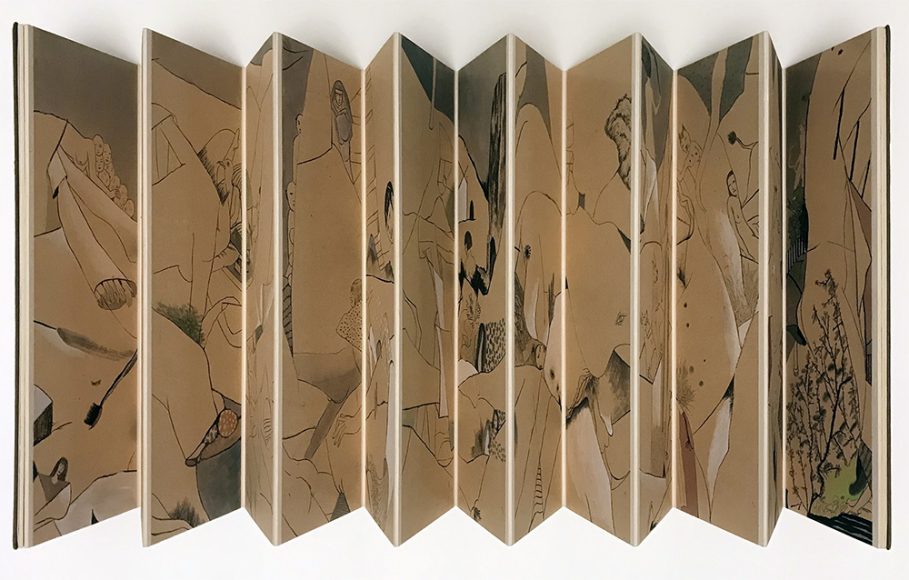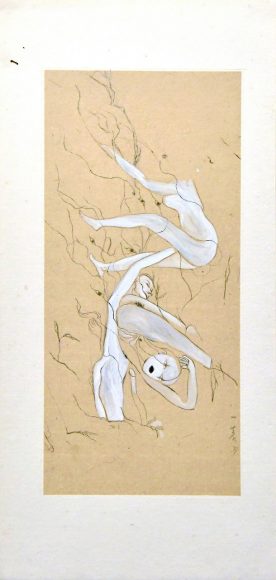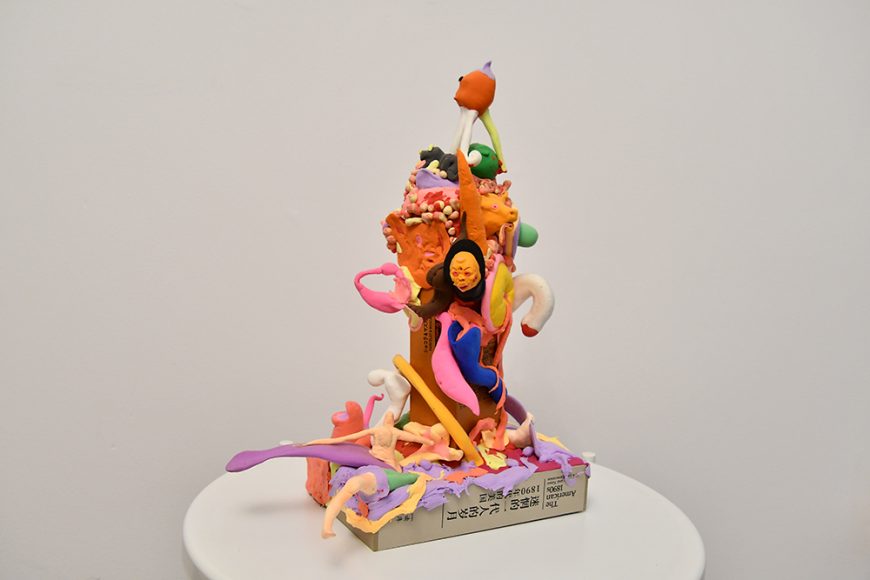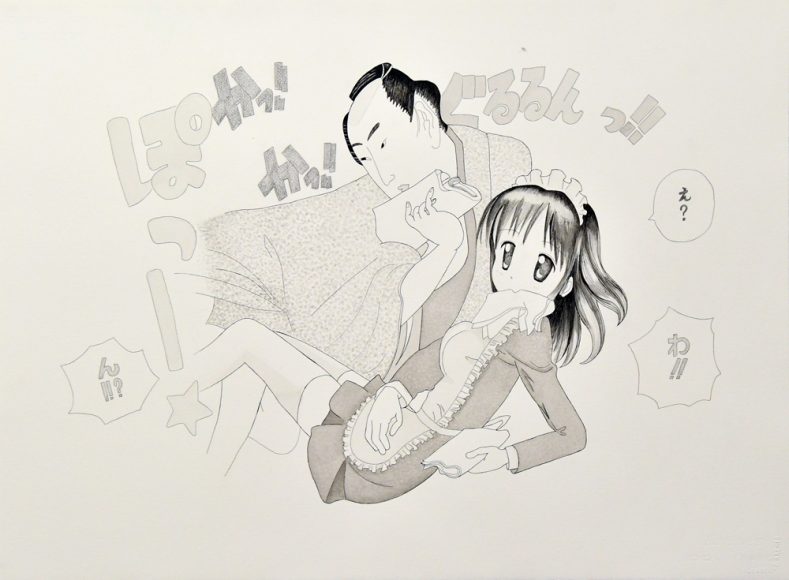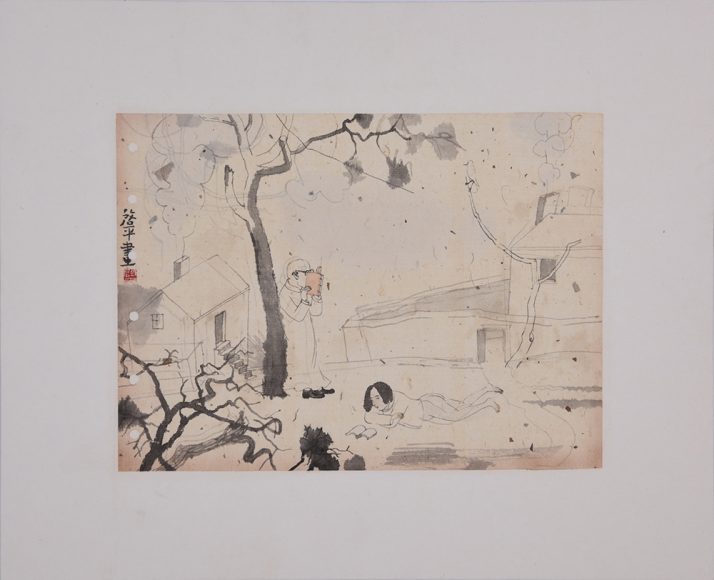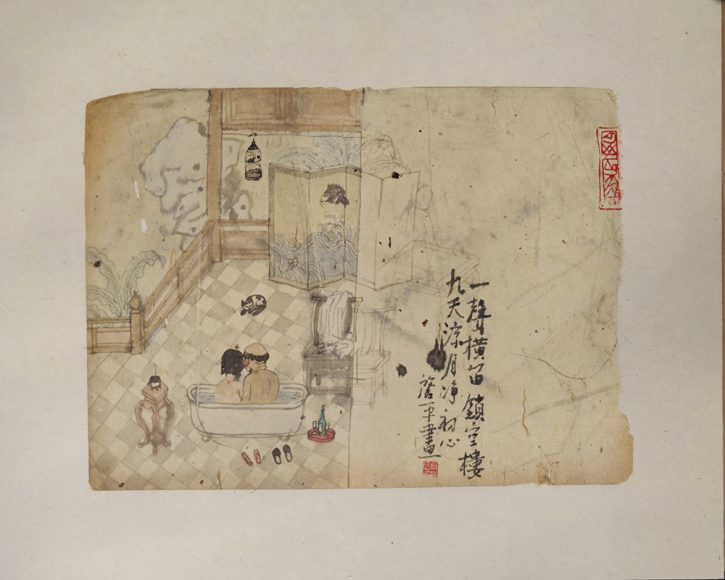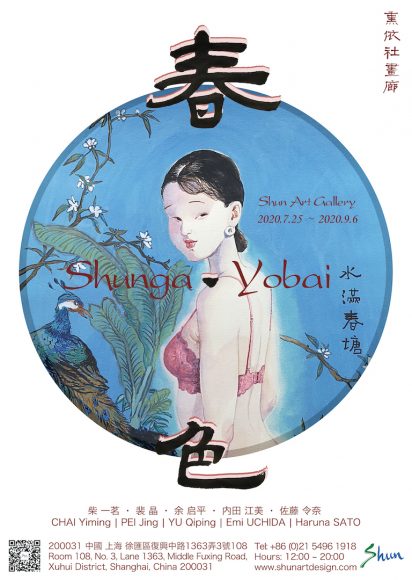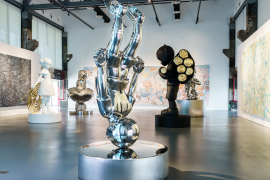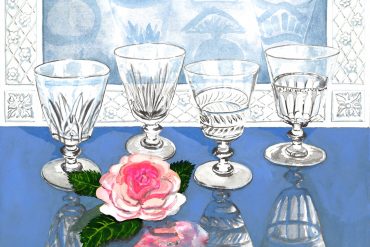“The Tale of Genji” by Murasaki Shikibu is one of the classical Japanese novels, as the equivalent of “Dream of the Red Chamber”, in the book the character Hikaru Genji was alike to Jia Baoyu from the “Red Chamber”. Many episodes appear in the novel as “Yobai: Crawling at night” which refers to a man sneaking into the chamber of a woman that he attracted to in the middle of the night for coitus, and leave quietly before the dawn. This was a custom in Japan abolished until modern times. Minorities in China seem to have a similar custom but it only has happened at the maternal clan tribes.
Philosophers through ages pondering art or lust would eventually bring up the functionalism – an ultimate form of play. From the verbal game to the physical collision, people extend their lives through a cognitive excitement and imagination, longing for surreal pleasures, which separated from the functional reality of “breeding”. In the book of “The Explanation of Dreams”, Freud’s description of functionalism and the discussing of “perversion of goals” and “perversion of purpose”; Behaviors goes beyond normal which bordering on the “pathological” or “perverted” were characterized vividly at Bataille’s novel “Le bleu du Ciel”. His appraising and inheritance of Freud’s works is an important part of the histories of philosophy and art. The influence of thoughts incarnates into a theoretical life.
By the starting of the 2020 summer season, more than 12 million people worldwide had infected the COVID-19 and the death toll exceeded half of a million. Is this tragedy coming by accident or has it been lurking for a while? At this time almost everyone is concerned about social distance. Primary infections, mass infections, one word about epidemic after another are warning people to not contacting with one and another. However, as for humans’ history began at a collective living style, the virus keeps the constant collective contagion over and over again. Interestingly, at the current a large percentage of the collective contagion around the world came from clubbing or drinking. The social movement of BLM induced the pondering of racism retroactively and reflectively, it may create some positive effects on the nowadays human society. The maintenance of social distance leads to human intimacy facing an unprecedented level of forbiddenness. But the taboo is precisely what human beings were most interested in exploring since the beginning of time.
In this particular period, we curate a group exhibition including five Chinese and Japanese artists. The theme of the exhibition, Shunga Yobai, has always been an interest of us. We also hope to tour the exhibitions both in Japan and Korea after the Shanghai station.
Pei Jing’s works are theatrical and stage-like. In the depiction the exposure of characters is pop-art alike and age countering. Part of the desire and stimulation originated from the body’s character of “plumpness breast and arm”. The surrounding environment is being depicted traditionally and aesthetically, within the contrast it became the true essence of the work.
The playfulness, humor, and the hidden diversity of Chai Yiming’s works will allow you to find new, as enlightening as when you were a child, reading the forbidding books or other acts that defied the norms. Freshness is the highlight of his works, they are versatile and high taste, which is the cultural heritage of his works carrying.
The literati temperament and relaxes in Yu Qiping’s works originated from the restraint and peace of the whole picture. Elegance, wabi-sabi, those characters were brought by the Chinese traditions and the charm of ancient capital Kyoto. The emptiness and vertigo of the ancient temples and forest, siding with the surreal serenity in the picture lead to a casual, free, and liberating state.
Japanese artist Emi Uchida’s work mixes Shunga compositions from the Ukiyo-e era paints with contemporary Japanese anime characters, which let the portrait figures bypassing the eras. In her works, the usual charcoal lines conceal the Shunga’s entanglements.
Haruna Sato’s works tend to sense the warmth and sensuality of the image, softly. But during the creation the artist strongly beat the canvas, blended with pigments. If you don’t concentrate when you see the painting, you couldn’t tell what’s in there. The function hidden in the abstraction, waited for you to observe.
It’s a shame that I can’t come back to Shanghai from Tokyo to appreciate the charms of those original works at the moment, and I admire you who can in Shanghai.
I miss Shanghai, hope to return soon in 2020, the year of turmoils.
– Shun, wrote at Tokyo Studio in a wild windy weather
Midsummer 2020
Shunga Yobai
Duration: Jul.25th, 2020 (Sat.) – Sep.6, 2020 (Sun.) 12pm – 8pm
Artists: CHAI Yiming, PEI Jing, YU Qiping, Emi UCHIDA, Haruna SATO
Producer: Shun
Host: Shun Art Gallery
Address: Room 108, No. 3, Lane 1363, Middle Fuxing Road, Xuhui District, Shanghai
Tel: +86 (0)21 5496 1918
The mission of ArtThat Now is to make accessible the art history of our time. We do all of the uploading and maintenance for you:
• Featured on our bilingual website
• Recommended on Flipboard
• Featured in our eNewsletters *
• Featured in our Official Public Accounts *
• Timestamp On The Blockchain *
• 360° VR panoramas H5 Web App *
Discuss in Kanban. Welcome to search “艺廊网”, “artthat” and follow us on WeChat and Weibo.
Now join ArtThat Elites Club, then re-create with artists and take silk-screen handwork home!



